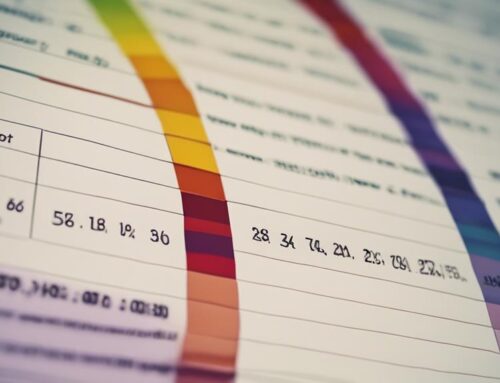Ensure your mortgage data’s accuracy and reliability with meticulous validation techniques. Detect errors, inconsistencies, and duplicates effectively to maintain data integrity. Utilize automated tools for efficient error detection and implement thorough validation rules to minimize inaccuracies. Regularly updating protocols and conducting audits are crucial steps. Enhance data quality with cleansing techniques and industry-standard validation checks. Protect sensitive information with encryption measures and cross-verify data from reliable sources. By focusing on data integrity, you lay a solid foundation for precise analysis and decision-making. Further insights await on optimizing your mortgage data processes.
Accuracy Checks in Mortgage Data
When validating mortgage data, it is crucial to conduct accuracy checks to ensure precision and reliability in the information. Utilizing effective data validation techniques is essential in this process. One of the key strategies for accuracy checks is implementing thorough validation rules. These rules help in detecting any inconsistencies or inaccuracies in the data. By setting up validation rules, you can prevent errors from occurring and maintain the quality of the mortgage data.
Another vital aspect of accuracy checks is the use of error prevention strategies. Implementing measures such as double-entry verification can significantly reduce the likelihood of errors slipping through. Double-checking data entry against source documents or previous records can help in identifying discrepancies early on. Regularly updating and maintaining validation protocols is also crucial for ensuring the accuracy of mortgage data.
Detecting Errors in Mortgage Information
To ensure the accuracy of mortgage data, detecting errors in mortgage information is a critical step in maintaining data integrity and reliability. Error detection techniques play a vital role in identifying discrepancies or inconsistencies within mortgage data. These techniques involve utilizing various data validation methods to pinpoint inaccuracies, such as missing information, incorrect values, or formatting errors.
One of the primary error detection techniques commonly used in mortgage data validation is automated validation checks. These checks involve setting up predefined rules and algorithms to flag any data entries that do not meet the specified criteria. Additionally, manual verification processes conducted by trained professionals are essential for detecting errors that automated systems may overlook.
Cleansing Mortgage Data for Accuracy
Cleansing mortgage data for accuracy involves systematically identifying and rectifying any inconsistencies or errors present in the dataset. To ensure the data is reliable and trustworthy, consider the following steps:
- Utilize Data Enrichment Techniques: Enhance the mortgage data by adding missing information or standardizing formats. This can involve cross-referencing with external sources or using algorithms to fill in gaps.
- Employ Automated Validation Tools: Implement software that can automatically scan the data for discrepancies or inaccuracies. These tools can help streamline the cleansing process and catch errors that may be overlooked manually.
- Validate Against Industry Standards: Compare the mortgage data against established industry benchmarks or regulations to ensure compliance and accuracy. This step helps maintain consistency and reliability in the dataset.
- Regularly Monitor and Update Data: Establish a routine schedule for reviewing and updating mortgage data. By regularly cleansing the data, you can prevent inaccuracies from accumulating and ensure the information remains up to date and reliable.
Removing Duplicates in Mortgage Records
In identifying and rectifying duplicate entries within mortgage records, meticulous scrutiny is essential to ensure data integrity and accuracy. When dealing with mortgage data, it is crucial to identify discrepancies that may arise due to human error or system glitches. By carefully comparing different entries, you can pinpoint duplicate records that need to be addressed. Eliminating redundancies is a key step in cleaning up mortgage data and preventing confusion or errors in future analyses.
One effective way to remove duplicates in mortgage records is by utilizing automated tools that can quickly scan large datasets for identical or highly similar entries. These tools can flag potential duplicates for manual review, allowing you to make informed decisions on which records to keep and which to discard. Additionally, establishing robust data entry protocols and conducting regular audits can help minimize the occurrence of duplicate entries in the first place.
Ensuring Data Integrity in Mortgages
Ensuring the integrity of mortgage data is paramount for accurate analysis and decision-making in the financial sector. When it comes to data verification and fraud prevention in mortgages, attention to detail is crucial. Here are four key practices to maintain data integrity:
- Regular Audits: Conduct routine audits of mortgage data to identify any discrepancies or irregularities that could indicate errors or potential fraud.
- Data Encryption: Implement robust data encryption measures to protect sensitive information from unauthorized access or tampering.
- Cross-Verification: Cross-verify data with multiple reliable sources to ensure accuracy and consistency across all mortgage records.
- Validation Checks: Utilize automated validation checks to flag any inconsistencies or incomplete data entries, reducing the risk of errors slipping through undetected.
Frequently Asked Questions
How Often Should Mortgage Data Be Updated to Ensure Accuracy?
To maintain data integrity, update mortgage data regularly. Verify accuracy frequently to assess risks effectively. By updating the information consistently, you ensure that your records are reliable and up-to-date, safeguarding against potential errors.
Are There Any Legal Requirements or Regulations Regarding the Accuracy of Mortgage Data?
When it comes to legal requirements or regulations in the mortgage industry, understanding compliance is key. Regulatory bodies set standards for data accuracy. Employing robust data validation techniques ensures adherence, safeguarding against potential legal ramifications.
What Measures Can Be Taken to Prevent Fraudulent Mortgage Data From Entering the System?
To prevent fraudulent mortgage data, you should implement robust measures. Utilize data encryption for secure transmission and storage. Employ fraud detection tools for real-time monitoring. Conduct thorough data validation to verify accuracy. Perform risk assessments regularly to identify and address potential vulnerabilities.
How Do Mortgage Lenders Handle Discrepancies in Data Provided by Different Sources?
When handling discrepancies in data from various sources, you must prioritize data reconciliation and thorough data verification processes. Pay close attention to details to ensure accuracy and consistency across all information to make informed decisions.
What Are the Consequences of Having Inaccurate Mortgage Data in Terms of Financial Risk and Regulatory Compliance?
When inaccurate mortgage data occurs, financial impact and compliance risk rise. Financially, errors could lead to lost opportunities or increased costs. Compliance-wise, penalties loom for not meeting regulatory standards. Validate data for smoother processes.



